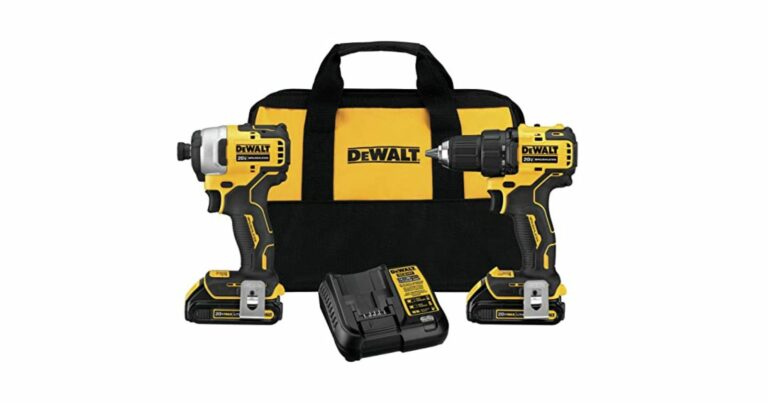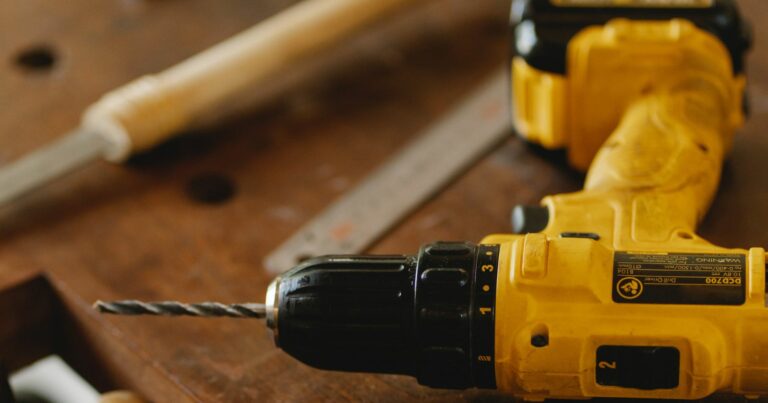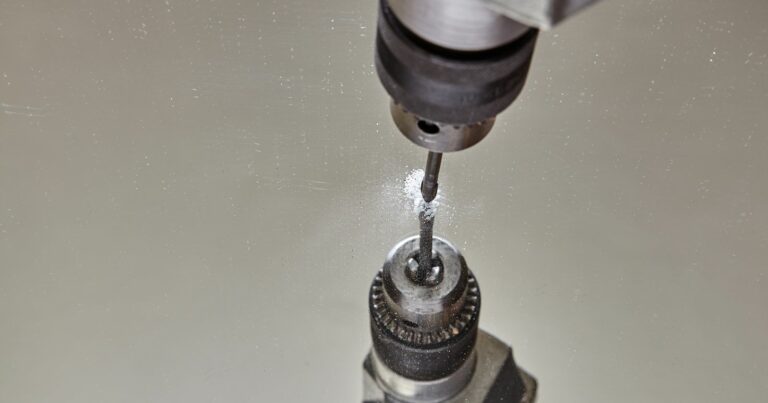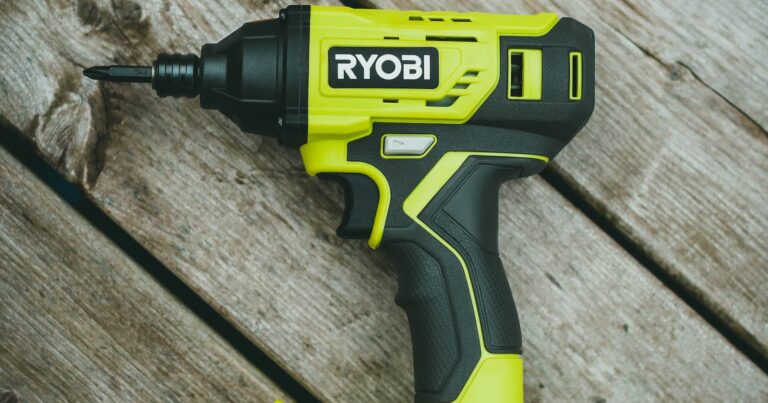Do I Need An Impact Driver
As a professional and DIY enthusiast, I’ve come to appreciate the popularity of impact drivers as a powerful tool. They offer the advantage of increased torque and power, simplifying the process of driving screws and fasteners into challenging materials. In this post, I’ll personally assist you in determining whether you need an impact driver or not. Furthermore, I’ll provide valuable insights on what to consider when selecting the perfect impact driver to meet your specific needs.

Understanding Do I Need an Impact Driver
Before deciding if you need an impact driver, it’s important to understand the differences between impact drivers and drills. While both tools can drill holes and drive screws, impact drivers are specifically designed for driving screws into tough materials such as hardwood, concrete, and metal.
An impact driver works by combining rotational force with concussive blows to create a powerful, twisting motion. This makes it much easier to drive screws into tough materials than with a traditional drill.
Advantages of using an impact driver include increased speed and efficiency, reduced strain on the user’s wrist, and the ability to drive long screws and fasteners with ease.
Do You Need an Impact Driver?
Whether or not you need an impact driver will depend on the types of projects you typically work on. If you frequently work with tough materials like hardwood, concrete, or metal, an impact driver is likely to be a valuable addition to your toolkit.
In addition, if you often work on large projects that require driving many screws or fasteners, an impact driver will make the job much faster and easier. However, if you only do occasional home repairs or smaller projects, a regular drill may be sufficient for your needs.
Impact Driver Features
When choosing an impact driver, there are a few key features to look for. These include:
Torque: The torque of an impact driver determines its power and ability to drive screws into tough materials. Look for a driver with at least 1,000 inch-pounds of torque.
Speed: The speed of an impact driver is measured in RPMs. Look for a driver with a speed range of 0-3,000 RPMs.
Chuck size: The chuck is the part of the impact driver that holds the screwdriver bit. Look for a driver with a 1/4-inch hex chuck, which is the standard size for most screwdriver bits.
Battery life: Impact drivers are typically powered by rechargeable batteries. Look for a driver with a battery life of at least two hours.
Ergonomics: Consider the comfort and ease of use of the impact driver, including its weight, grip, and overall design.
Watch This Video And Learn Do I Need An Impact Driver
Maybe its time for you to look at some impact drivers. Check out the Best Impact Driver Drill Under $100.
Impact Driver Maintenance
Proper maintenance is essential for keeping your impact driver in good condition and prolonging its lifespan. Here are a few tips for maintaining your impact driver:
Keep it clean: Wipe down your impact driver after each use to remove any debris or dirt.
Lubricate regularly: Apply a few drops of oil to the impact driver’s chuck and collect before each use to keep it running smoothly.
Charge the battery properly: Follow the manufacturer’s instructions for charging the impact driver’s battery.-
Store properly: Store your impact driver in a cool, dry place to prevent damage.
Common problems with impact drivers include stripped screw heads, broken bits, and overheating. If you encounter any of these issues, consult the manufacturer’s instructions or seek assistance from a professional.
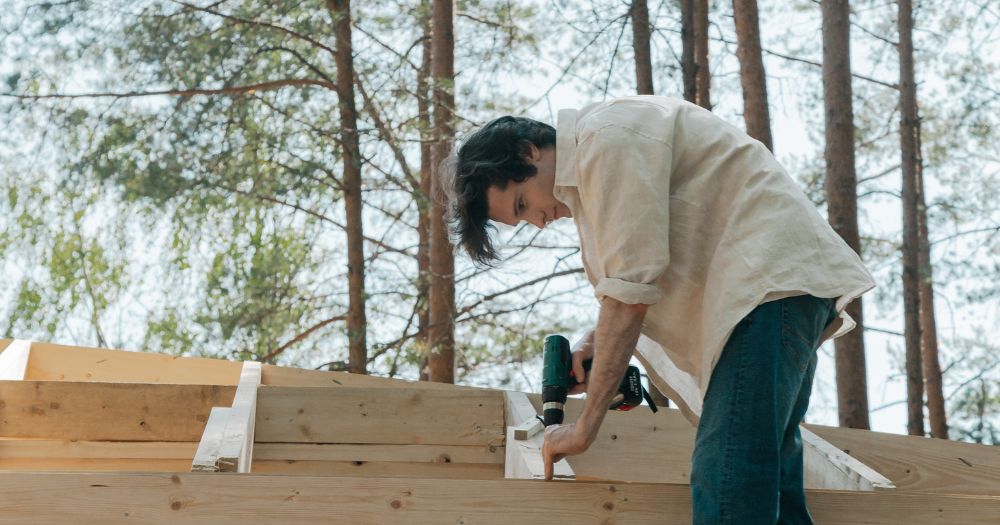
Safety Tips: Advice on Using Impact Drivers Safely
As someone who frequently uses power tools, I can’t stress enough the importance of safety when operating these devices. Impact drivers, while incredibly useful, can pose certain risks if not handled correctly. I’ve learned through experience that taking precautions can make a world of difference, and I’d like to share these safety tips with you.
Firstly, I always make sure to protect my eyes by wearing safety glasses. You’d be surprised by the amount of debris that can fly off when you’re driving screws into materials. Trust me, you don’t want to learn this the hard way.
Secondly, I’ve found that it’s crucial not to apply too much pressure when using an impact driver. These tools are designed to do the heavy lifting for you. By applying excessive force, you not only risk damaging the tool or the material you’re working with, but you also increase the chance of injury.
Lastly, I always ensure my work area is clean and well-lit before I start. A cluttered workspace can lead to accidents, and poor lighting can cause you to misjudge distances or not see hazards. By keeping my workspace tidy and well-illuminated, I can focus on the task at hand without worrying about unnecessary accidents.
Remember, the key to successfully using any power tool is respect for the tool and an understanding of how to use it safely. By following these tips, you can ensure your safety while using an impact driver.
DIY Projects: Experiences with Impact Drivers
As a DIY enthusiast, I’ve found my impact driver to be an indispensable tool in my kit. I’d love to share with you some of the projects where I’ve found it to be particularly useful, giving you a practical understanding of how and when you might use this tool in your own DIY endeavors.
One of my favorite projects where my impact driver really shone was when I was building a deck in my backyard. The sheer number of screws required for this project was daunting. However, my impact driver made quick work of it, driving screws into the hardwood with ease and speed that a regular drill just couldn’t match.
Another project that comes to mind is when I was installing a metal shelving unit in my garage. The impact driver’s ability to drive screws into metal without stripping them was a game-changer. It made the assembly process smooth and hassle-free.
I’ve also used my impact driver for smaller projects around the house, like hanging heavy picture frames and assembling furniture. Its compact size and powerful torque make it perfect for these tasks, allowing me to work efficiently without straining my wrist.
In my experience, an impact driver can be a real game-changer for any DIY project, big or small. It’s one of those tools that, once you start using it, you’ll wonder how you ever managed without it. I hope my experiences inspire you to explore the potential of an impact driver in your own DIY projects.
Suggested Reading: How To Properly Drive A Screw With A Impact Driver
Troubleshooting Guide: Experiences with Impact Driver Issues
Over the years of using an impact driver, I’ve encountered a few hiccups along the way. I’ve learned how to troubleshoot these issues and I’d like to share these solutions with you. This way, you’ll know what to do if your impact driver isn’t working, how to replace the bit, or even how to fix a stripped screw.
Firstly, if your impact driver isn’t working, don’t panic. I’ve found that the most common issue is usually related to the battery. Check if it’s properly inserted and fully charged. If the battery is fine, then inspect the tool for any visible damage or debris that might be hindering its operation.
Replacing the bit is a task I’ve done countless times. It’s simple once you get the hang of it. Just pull the collar of the impact driver forward, remove the old bit, insert the new one, and release the collar. Make sure the new bit is secure before you start using the tool again.
As for fixing a stripped screw, it’s a bit trickier, but not impossible. I’ve found that placing a rubber band over the stripped screw and then using the impact driver can provide the extra grip needed to remove it. If that doesn’t work, you might need to use a screw extractor kit, which is designed specifically for this purpose.
Remember, troubleshooting is part of the process when working with power tools. It’s all part of the DIY experience. By understanding these common issues and knowing how to solve them, you’ll be better prepared to handle any challenges that come your way when using an impact driver.
Environmental Impact: Thoughts on Battery-Powered Tools and Sustainability
As an avid user of power tools, I’ve often pondered the environmental impact of my hobby. Specifically, the use of battery-powered tools like impact drivers has made me consider their ecological footprint. I believe it’s important to discuss this topic openly, and I’d like to share some thoughts on how we can minimize this impact.
Battery-powered tools, while incredibly convenient and powerful, do come with an environmental cost. The production, use, and disposal of batteries can contribute to pollution and resource depletion. However, I’ve found ways to mitigate these effects and make my DIY activities more sustainable.
Firstly, I always opt for tools with rechargeable lithium-ion batteries. These batteries are more energy-efficient and have a longer lifespan compared to older battery types. This means fewer batteries end up in landfills, reducing waste.
Secondly, I make it a point to recycle my used batteries properly. Many cities have recycling programs for batteries, and some tool manufacturers even offer take-back programs. By recycling, we can ensure that valuable materials in the batteries are recovered and reused, rather than ending up in a landfill.
Lastly, I try to maximize the lifespan of my tools and batteries by maintaining them properly. This includes regular cleaning, proper storage, and not overcharging the batteries. By extending the life of our tools, we can reduce the demand for new products and thus lessen our environmental impact.
In conclusion, while our hobbies and work may have an environmental impact, there are always steps we can take to make them more sustainable. As a DIY enthusiast, I believe it’s our responsibility to be aware of these impacts and do our part to minimize them.
FAQs
Impact drivers have become increasingly popular among DIY enthusiasts and professionals alike, but some people may wonder if they really need one. Impact drivers are designed to deliver high torque with minimal effort, making them perfect for driving screws and other fasteners into tough materials like wood and metal. In this FAQ section, we’ll answer some of the most common questions people have about whether or not they need an impact driver.
1: What is an impact driver, and how is it different from a regular drill?
An impact driver is a power tool that delivers high torque and rotational force to drive screws and other fasteners. Unlike a regular drill, an impact driver uses a combination of rotational force and concussive blows to deliver the necessary torque, making it easier to drive screws into hard materials like wood and metal. This also means that impact drivers are less likely to strip screws or damage materials compared to a regular drill
2: Do I need an impact driver if I already have a drill?
While a drill can certainly be used for many of the same tasks as an impact driver, an impact driver is better suited for driving long screws and fasteners into tough materials. If you frequently work with hardwoods, metal, or other dense materials, an impact driver can save you time and effort compared to using a regular drill. Additionally, an impact driver can often fit into tighter spaces where a regular drill may not be able to reach
3: Are impact drivers expensive, and is it worth the investment?
Impact drivers can range in price from around $50 to $300 or more, depending on the brand and features. While they may be more expensive than a regular drill, an impact driver can save you time and effort on projects that require driving long screws and fasteners into hard materials. Additionally, many impact drivers are designed to be compact and lightweight, making them easier to use for extended periods without causing fatigue. Ultimately, whether or not an impact driver is worth the investment will depend on your individual needs and the types of projects you typically work on.
Further Reading: Best Impact Driver Drill Under $50
Conclusion
In summary, if you frequently work with tough materials or large projects that require driving many screws or fasteners, an impact driver is likely to be a valuable addition to your toolkit. When choosing an impact driver, look for one with sufficient torque, speed, and battery life, as well as comfortable ergonomics. Proper maintenance will help ensure your impact.


